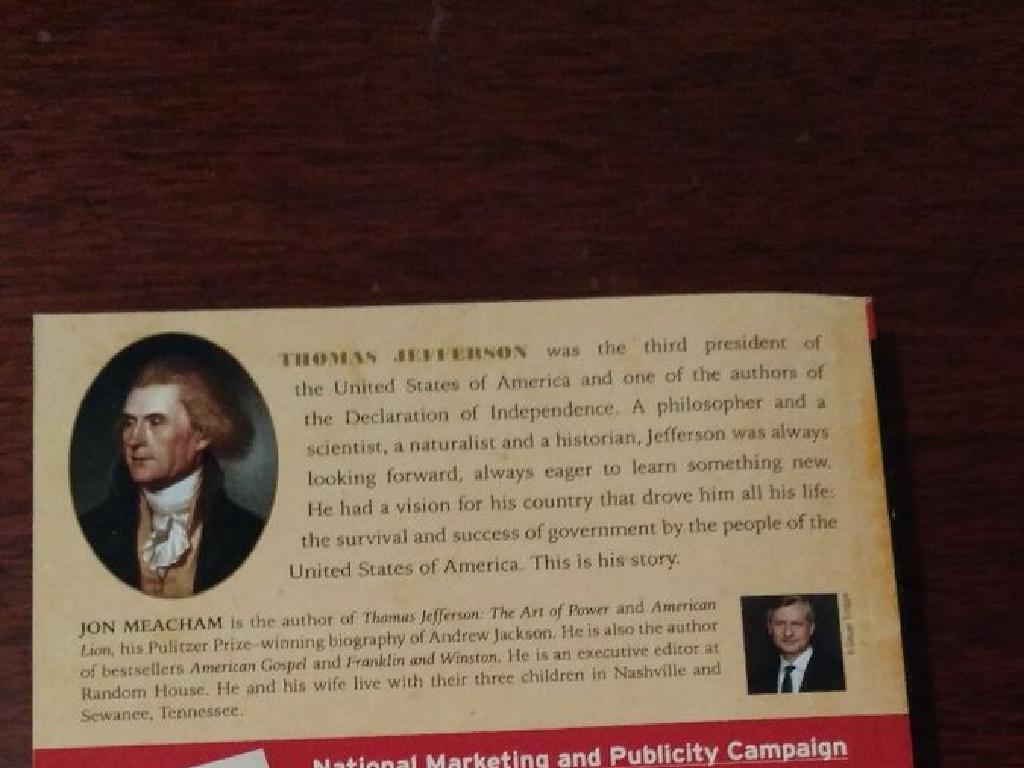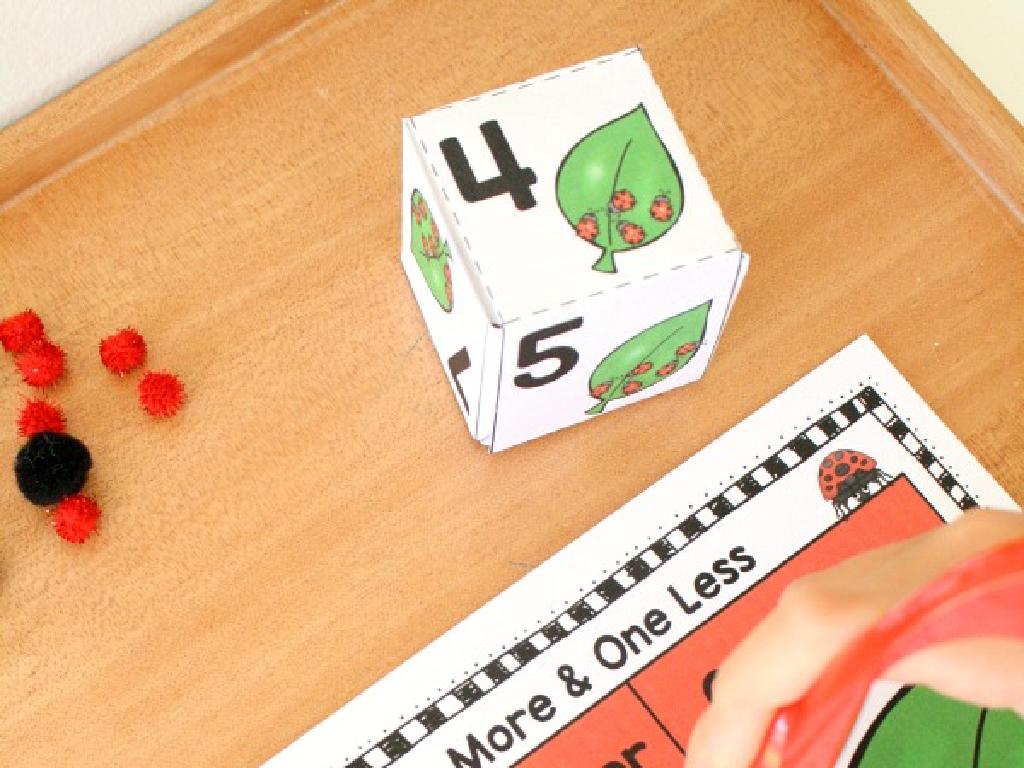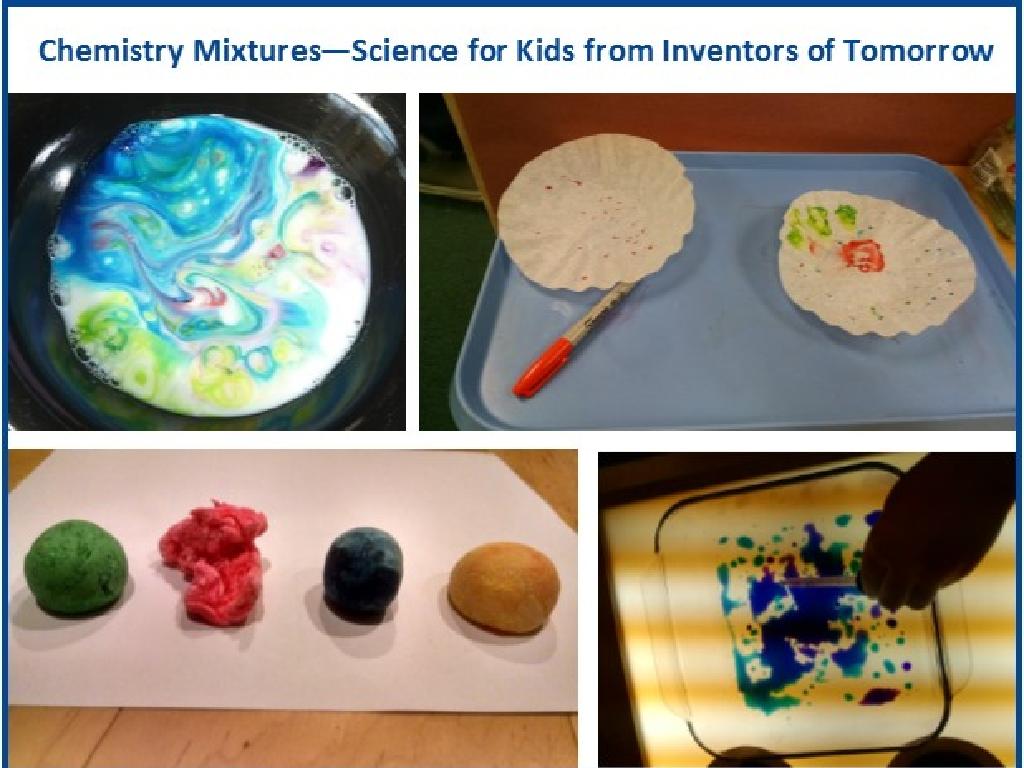Analyze The Effects Of Figures Of Speech On Meaning And Tone
Subject: Language arts
Grade: Seventh grade
Topic: Literary Devices
Please LOG IN to download the presentation. Access is available to registered users only.
View More Content
Exploring Figures of Speech
– Power of words in literature
– Literary devices shape meaning
– Metaphors, similes, personification add depth
– Figures of speech impact tone
– Sarcasm, hyperbole influence emotion and attitude
– Today’s focus: Figures of Speech
|
This slide introduces the concept of figures of speech and their significance in literature. Emphasize how words can be used creatively to convey more than their literal meanings. Explain that literary devices such as metaphors, similes, and personification enrich the text by adding layers of meaning. Discuss how the tone of a piece can be affected by figures of speech, with examples of sarcasm creating a mocking tone or hyperbole expressing strong emotions. Encourage students to think of examples from books they’ve read or to create their own sentences using figures of speech. This will set the stage for a deeper analysis of literary works and how authors use language to influence readers’ perceptions.
Exploring Figures of Speech
– Define Figures of Speech
– Creative expressions not meant to be taken literally
– Their role in language
– They add depth and emotion to writing
– Examples: Metaphor, Simile
– Metaphor: comparison without ‘like’ or ‘as’; Simile: uses ‘like’ or ‘as’
– More examples: Personification, Hyperbole
– Personification: giving human traits to non-human things; Hyperbole: extreme exaggeration
|
This slide introduces students to figures of speech, which are creative ways to express ideas and emotions in language. They are not meant to be interpreted literally but are used to add artistic flair to writing. Metaphors and similes compare two things to highlight similarities, with similes using ‘like’ or ‘as’ and metaphors not. Personification gives human characteristics to inanimate objects or abstract ideas, making them relatable. Hyperboles are deliberate exaggerations to create emphasis or humor. Encourage students to find examples of these figures of speech in literature and discuss how they affect the meaning and tone of the text.
Metaphors and Similes: Shaping Meaning and Tone
– Understanding Metaphors
– A metaphor is a direct comparison without using ‘like’ or ‘as’, e.g., ‘Time is a thief.’
– Exploring Similes
– A simile uses ‘like’ or ‘as’ to compare, e.g., ‘Busy as a bee.’
– Examples in Literature
– ‘He was a lion in battle’ shows bravery. ‘Her smile was like sunshine’ gives a cheerful tone.
– Effects on Meaning and Tone
– Figures of speech can emphasize emotions, create imagery, or set a mood.
|
This slide introduces students to metaphors and similes, two key figures of speech that are essential in literature to convey deeper meanings and emotions. Metaphors make direct comparisons, suggesting that one thing is another, which can add layers of meaning and create a specific tone. Similes, on the other hand, compare two things using ‘like’ or ‘as’, often making descriptions more vivid and relatable. Provide examples from familiar texts or poems to illustrate how these figures of speech work and their impact on the reader’s interpretation. Encourage students to think about how the use of metaphors and similes can change the way they perceive a character or setting. The goal is to help students recognize these literary devices in texts and understand their powerful role in shaping meaning and tone.
Exploring Personification in Literature
– Personification defined
– Assigning human traits to objects or ideas
– Personification animates text
– Makes descriptions vivid and relatable
– Analyzing literary examples
– Examine how authors use personification
– Effects on meaning and tone
– Personification can add humor, seriousness, or emotion
|
This slide introduces the concept of personification, a literary device where non-human elements are given human characteristics. By personifying objects or ideas, authors can create more engaging and imaginative texts that resonate with readers. In analyzing examples from literature, students will see how personification affects the meaning and tone of a passage, whether it’s to add depth, humor, or emotion. Encourage students to think of their own examples of personification from books they’ve read or to create their own sentences using personification. Discuss how this figure of speech can change the way we perceive a narrative and connect with the audience.
Understanding Hyperbole in Literature
– Define hyperbole
– An extreme exaggeration used for effect, not meant to be taken literally.
– Identify exaggeration in texts
– Look for statements that are too extreme to be true to spot hyperbole.
– Hyperbole’s effect on perception
– Hyperbole can intensify feelings, create humor, or add emphasis, affecting how we see a situation.
– Analyze hyperbole’s role in tone
– It can add sarcasm, humor, or drama, influencing the tone of the text.
|
This slide introduces students to the concept of hyperbole, a figure of speech that involves exaggerated statements or claims not meant to be taken literally. It’s important to guide students to recognize hyperbole in various texts and understand its purpose. Hyperbole can dramatically shape the reader’s perception and emotional response to the text. By exaggerating certain aspects, authors can highlight themes, create a humorous effect, or convey strong emotions. Students should learn to analyze how hyperbole contributes to the tone of a piece, whether it’s to evoke laughter, provide emphasis, or create a heightened sense of urgency or importance.
Figures of Speech: Shaping Meaning and Tone
– Figures of speech influence message
– They affect emotions and comprehension
– Group activity: Find figures in poetry
– Work in groups to identify metaphors, similes, etc. in a selected poem
– Discuss the impact on meaning and tone
– Share how these figures affect the poem’s emotion and message
|
This slide aims to explore how figures of speech, such as metaphors and similes, alter the meaning and tone of a text. Students will learn that these literary devices can intensify emotions and deepen understanding. The group activity involves students working together to pinpoint figures of speech within a poem and discussing their effects. As a teacher, facilitate the activity by choosing a poem rich in literary devices, guide the students in their analysis, and encourage a discussion on how these elements influence the reader’s emotional response and interpretation of the poem. Possible poems for the activity include ‘The Road Not Taken’ by Robert Frost or ‘Still I Rise’ by Maya Angelou.
Class Activity: Exploring Figures of Speech
– Divide into groups, read a poem
– Identify figures of speech within
– Look for metaphors, similes, personification, etc.
– Discuss their effect on the poem
– How do these elements influence the poem’s emotion and message?
– Prepare a group presentation
|
This activity is designed to enhance students’ understanding of figures of speech and their impact on literature. Students will work in groups to foster collaboration and critical thinking. After reading the selected poem, they should identify figures of speech such as metaphors, similes, and personification. The discussion should focus on how these literary devices influence the tone and meaning of the poem. Each group will then present their analysis to the class, allowing for a diverse exploration of interpretations. For the teacher: Prepare a selection of poems with clear figures of speech. Possible activities include analyzing a classic poem, creating their own poem using figures of speech, or finding figures of speech in song lyrics.
Wrapping Up: Figures of Speech
– Recap on figures of speech
– Significance of literary devices
– Literary devices enhance writing, making it vivid and expressive.
– Homework: Craft a paragraph
– Use metaphors, similes, personification from today’s lesson.
– Share your creative examples
– Be prepared to present your paragraph in the next class.
|
As we conclude today’s lesson, remind students of the various figures of speech we’ve covered, such as metaphors, similes, and personification, and their impact on the meaning and tone of writing. Emphasize how these literary devices can transform simple writing into something more engaging and thought-provoking. For homework, students should write a short paragraph incorporating the figures of speech discussed. This will help reinforce their understanding and application of these concepts. In the next class, we’ll share and discuss these paragraphs, providing an opportunity for peer learning and constructive feedback.






